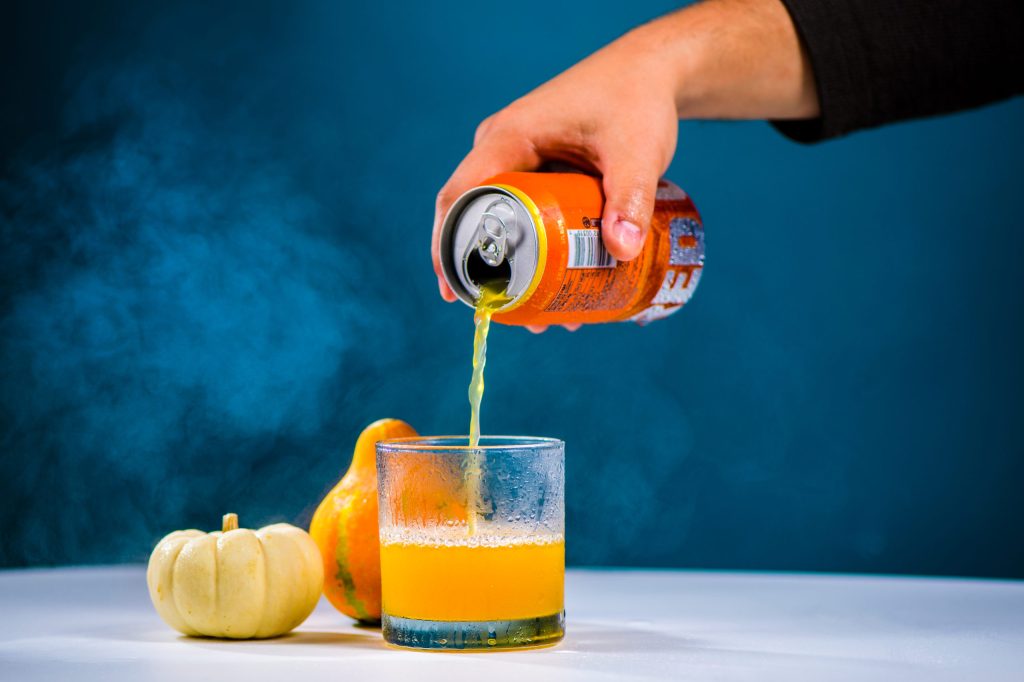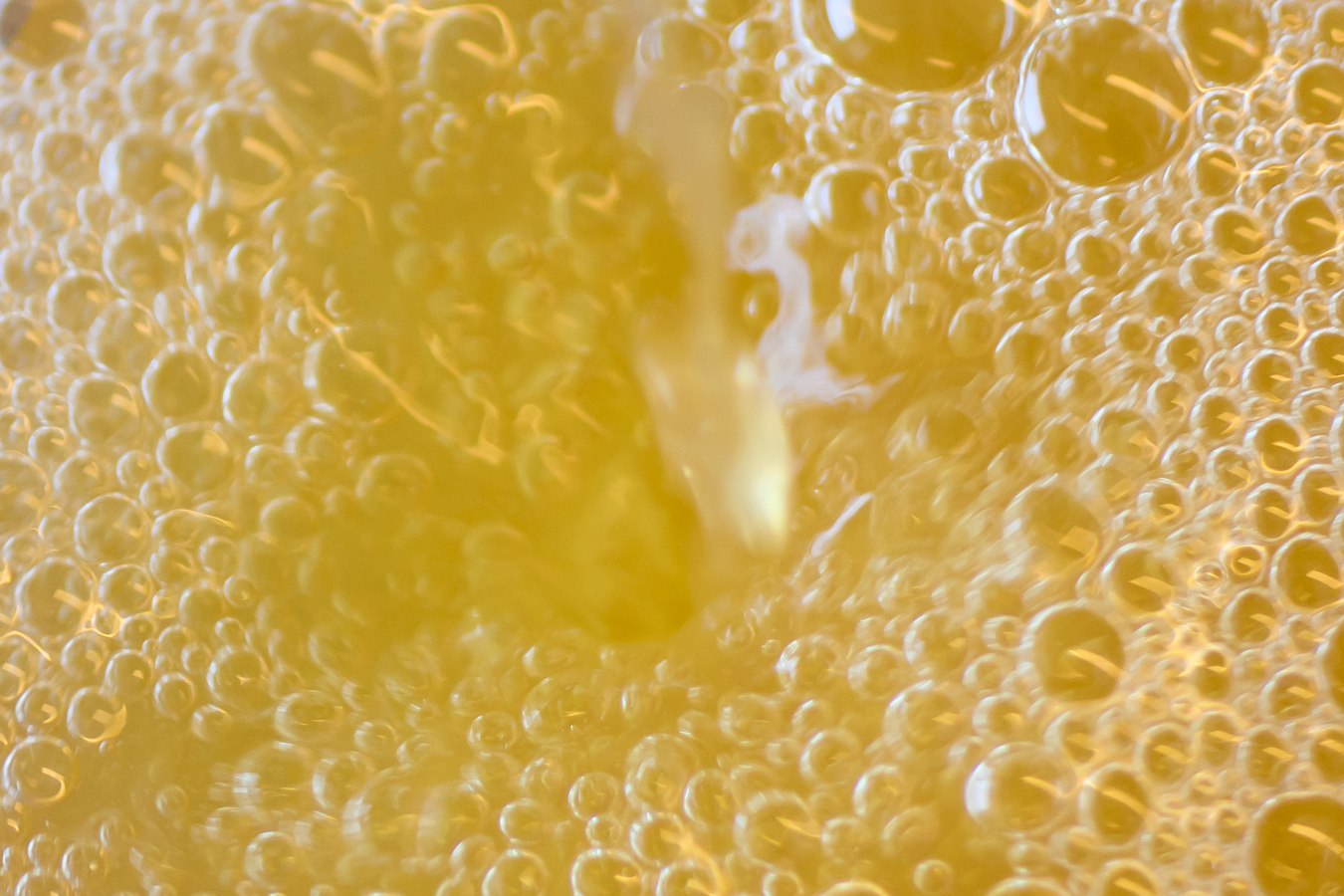Don’t call it a comeback. Hard cider’s rise in popularity is a return to form for one of America’s most historic drinks

The air is getting crisper, the trees are changing to vibrant reds and yellows, and pumpkins––and pumpkin spice––are everywhere. Fall is here, and that also means it’s apple cider season. Or at least it normally would be.
Now, it seems like every season is cider season, as hard cider has risen in popularity significantly over the last decade. Before hard seltzer and ready to drink cocktails started to become trendy, hard cider was hitting its stride. And although it still only takes up a fraction of the U.S. alcohol market compared to beer, its growth over the last decade or so has been significant in the alcohol sector.
In 2021, cider produced $553.6 million in revenue, a slight dip from $566 million in 2020 but an increase over $517.8 million in 2019, according to NielsenIQ. However, that only accounts for chain retail sales. Including on premises draft and other sources, cider produces over $1 billion in revenue. And in North America, the market is expected to grow by 3.5% between 2022 and 2027, in large part due to U.S. consumers embracing hard cider.
Traditionally produced by fermenting apples–and now pears and other fruits–hard cider can range from as low as 1.2% to as much as 12% alcohol by volume, or ABV. It can be still or sparkling, dry or sweet, summery or autumnal. Whether you’re drinking it or making it, cider is accessible, a gateway to an entire world of craft beverage making.

Malcolm Purinton, an assistant teaching professor of history at Northeastern who studies the history of alcohol, says cider’s recent popularity is partially connected to the rise of craft beer after the 2008 recession.
“You had a lot of people starting lots of breweries, and then you had a lot of people also wanting to be part of that craft crowd,” Purinton says. “Part of the idea is independence, innovation and community were developing around that, but [some consumers] didn’t like beer.”
The Cider Renaissance, which kicked off in 2010 and 2011, also overlapped with several other trends at the time, says Michelle McGrath, executive director of the American Cider Association.
“There was a synergy of the craft beer movement, a new gluten free trend and an interest in local food––and you get all of those things with cider,” McGrath says.
Although local and regional cideries had been operating for years, cider officially hit the mainstream after Boston Beer Company, producer of Samuel Adams, noticed the cider trend starting to hit the market. The company bought 60 acres in the Hudson Valley and released Angry Orchard, its own brand of hard cider, nationwide in 2012.
“That opened the gate for independent and regional cideries to come online,” McGrath says.
Since then, unlike in the beer world, regional and local brands have grown to the point where they have eclipsed national brands like Angry Orchard in terms of dollarshare. The market has continued to grow steadily and was impacted very little by the COVID-19 pandemic due to its local ties and distribution networks.
“Cider at its heart is a local or regional beverage because it’s connected to the orchard, and today’s consumer wants an experience,” McGrath says. “There’s no better experience than getting to intimately understand where the apple in your product came from.”
With increased visibility, consumers are also starting to become more educated about cider. McGrath says people are starting to understand the difference between a low acid or high acid cider and how different kinds of apple impact the flavor profile.
But hard cider is far from new to the U.S. It’s been part of American life since the first colonists arrived.

Although there were some wild varieties of apples in the Americas, European colonists brought their own apples and apple tree cuttings with them. Apples are filling, can last for a while, keep great during the winter and have plenty of vitamin C to help keep scurvy at bay. Hard cider is so easy to make, Purinton says, that for many colonists, even if they weren’t drinking it at a tavern, it was easy enough to make and keep a batch at home.
Apples naturally ferment when left alone; it’s just a matter of coaching the process. And when it comes to startup costs, even now the biggest cost is the apples themselves (since most cideries don’t grow all of their own apples).
“When I made cider myself, I got five gallons of cider from a local orchard in Vermont, I added in five pounds of honey, used champagne yeast, let it ferment for months and months and months–I ended up with a 14% dry cider,” Purinton says. “It’s super easy to do.”
In Massachusetts circa 1700, average cider consumption was 35 gallons per person per year, Purinton says. One out of every 10 farms in New England had its own cider press. Cider was part and parcel of early American life, to the point where “everyone was a little bit buzzed for several decades of United States history,” including the Founding Fathers, Purinton says. Thomas Jefferson was known to drink two steins of hard cider every day–with breakfast.
Purinton says cider remained a part of American drinking culture until Prohibition in the 1920s. Government agents destroyed entire orchards to discourage alcohol production, which was really only “destroying what people were producing almost entirely for themselves.”
Now, cider is back, and it’s changing.
At its core, the drink is the same––apples are pressed, made into juice, fermented, aged and bottled––but cider makers are starting to embrace “dual-purpose apples.” Red delicious, winesap, gravenstein: These are apples that can be eaten on their own, used in a pie or made into cider. Traditionally, cider makers have focused on using bittersweet and bittersharp apples, English and French cider apples that are coveted by cider nerds but that can be off-putting to newcomers.
McGrath calls this the “next cider revolution” because it’s not only changing how cider makers approach the process but how people view cider.
“It is super important, and it is really exciting to see cider makers start to play more with the apples that the everyday apple eater has heard of because it’s a gateway for them to understand that apples matter tremendously in cider,” McGrath says.
Cider might never rival beer in terms of market share, but its recent return to the mainstream proves its longevity and legacy in American culture. Call it a comeback or return to form––even when fall fades to winter, cider isn’t going anywhere.
For media inquiries, please contact media@northeastern.edu.






